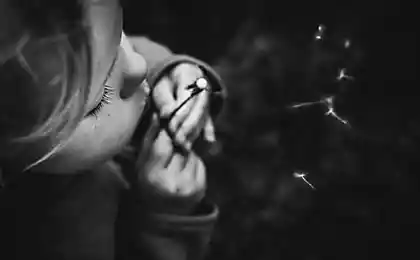712
Ruble smile
I was always interested in cars, although I can not boast of an encyclopedic knowledge of how some of the people living here. This does not prevent me from having fun to visit the exhibition and write a couple of car magazines. I also always interesting to hear the opinion of foreigners as a Soviet or Russian. On duty, often communicate with people, one way or another participated in trade relations with the Soviet Union. They are always happy to listen, the more it is time to remember them and to himself pleased - it was a time not only of their youth, but also of economic recovery in Finland.
Therefore, finding and reading in the category "Classical" one prescription me magazines, articles about the cult Soviet GAZ-13 Chaika, decided by all means to share with the readers of Yap, in the hope that the view from the outside and a little history of an era of the domestic automotive industry It will seem interesting to many of the regulars avtorubriki "YaPlakal»
Translation of "sight", my original text in Finnish and photos of the magazine "Motor»
Please do not wedged in the text, but to wait for the end, which was reported separately
According to the materials of the periodical of the Union of motorists in Finland "Motor" no. 6/2012
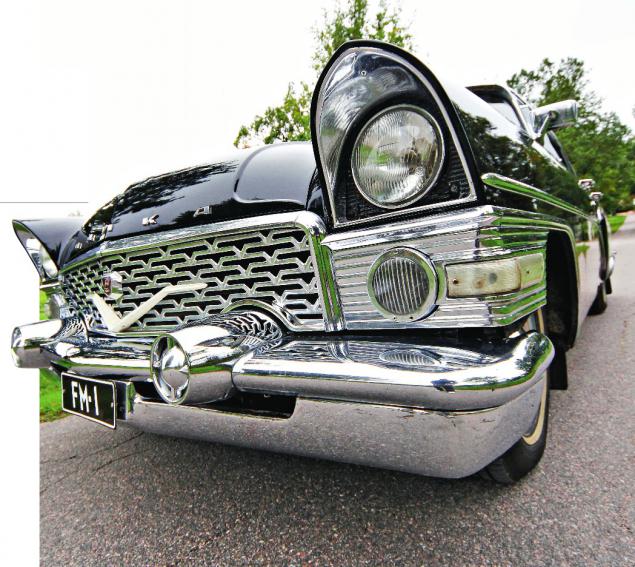
Rublev SMILE
Soviet executive car Chaika, or officially GAZ-13 - one of the cars in which people went through their representatives. Times, customs, and even the state has since changed, but in everyday road traffic Seagull has never been seen. In addition to the very, registered in the county of Oulu taxi (a city in northern Finland, approx. Interpreter), which is rumored to be set Treyderovky diesel ...
Of course, from the Union of Soviet Socialist Republics was supposed to be a representation car. Ministers, senior officials and important functionaries of the Communist Party of the great and powerful country was worthless to move on stellar crew (an allusion to the Mercedes - approx. Interpreter here and below), not to mention the "dollar smile" (ie, American cars - n. P.). The same applies to representatives of the USSR abroad.
Was the Soviets, of course, the 7-seater limousine ZIS-110. Its origin goes the rumor that the car is based on a gift from Franklin Roosevelt in 1942, Joseph Stalin Packard Super Eyte (Packard Super Eight). With the difference that ZISovskie millimeter bolts, not inch, like Packard. Six-liter row eight, like the rest of ZIS technique, originally from the 1930s, including the front of the machine. Total in 1959 released the 2089 cars of this brand. And he was not an exact copy of Packard.
Later ZIM is also the end of the 1950s began to look dated, even though he was the world's first passenger limousine with three rows and a monocoque body. He had plenty of chronic shortcomings: heavy control, brake infirm, weak front suspension, poor stove, poor body resistance to corrosion and high noise levels behind the cab - ie very inappropriately exactly where the passengers were important. Zimove released from 1950 to 1959. more than 21,000 units in Finland, they became familiar mainly as taxis.
From the appearance of the old ZIM it was time to get rid of, and requirements for power, ride quality and comfort were formed. An order was placed, or rather, an order for the production of new large executive car.
A new direction began to look, and soon found. GAZ finished the first prototype machine representative at ministerial level in 1957, and cars designed to directly test run were ready in 1958. For decades avtokonstruirovaniya the schedule was very fast.
For small-scale production began January 16, 1959. Even before the prototype Gulls and Volga M-21 were shown at the world exhibition EXPO 58 in Brussels. There Chaika won the Grand Prix for the achievements of designers and designers. Start of production is also approximately coincide with the XXI Congress of the CPSU. GAZ gave Congress a copy of The Seagull as a "worker gift»
Seagull with all the innovation was a significant step forward for the automotive industry of the Soviet Union. During 1959 she exhibited at many international exhibitions in Brno, Budapest, Leipzig, Geneva and even New York. At home it was exhibited in the pavilion of engineering at ENEA. Birth Seagulls
In constructing its representation of machines, the Soviet Union followed the American concept of the automotive industry. This, no doubt influenced and end-user requirements. In the 1950s, the leaders of the USSR fascinated large motors V8, automatic transmission, large windows and expressive shape of the body. In 1955, the Soviet Union bought as samples 2 Packard - Patricia and Karibea. Specialists us, GAZ and ZIL plant, dismantled car parts and studied them intently. In 1956, work on the creation of a new executive car started "from scratch».
GAZ has received an order to create a vehicle "ministerial" level. While the plant was named People's Commissar of Foreign Minister Molotov, and called ZIM. After the defeat of the Stalinists, Molotov fell into disgrace and the plant returned to its original name, GAZ. Thus and Seagull received a GAZ-13 index.
The number 13 was considered unlucky, but the real Communists ought not to be superstitious. Along with the model number, the car was named Seagull at the Slavic tradition to look all over the comparative. The car carrying important passengers, was supposed to be a class higher than its predecessor. A seagull hovering over the expanse of the Volga - easy! .. Responsible for organizing the export of cars, Autoexport, suggested in his booklet a little more romantic interpretation. Gorky, who live on the banks of the mighty Volga River, admire seagulls glide over the surface of the river. So the name of the Seagull was born as if by itself.
Automotive history of our eastern neighbor is very well documented and objectively. It says deceived automotive history Timo Laitinen, who collected the whole thematic library, many books in which Russia and the USSR. Timo kindly found out who was responsible for the development of Seagulls, referring to two books: SV Kanunnikov "Domestic Cars" (2009) and Leo Shugurov "Cars Russia and the Soviet Union, part of the 2nd" (1994). According to them, the driving force of the group of designers were B.S.Solovёv, NA Jushmanov, NG Mozohin. As a "designer" is mentioned L.M.Eremeev.
The American cars have for many years been used multi-cylinder V-type engines. The Soviet representative high-end limousine could not keep up in this competition. As a basis for the development was taken as an 8-cylinder engine Chrysler. Its components such as cylinder groups, and gas exchange system, a unified engine Volga M-21. First released in Gorky, mounted on the prototypes of Seagulls, motors V8, had a working volume of 4, 89 liters and power of 180 horsepower.
When tested immediately it found out that you need more power. Volume increased to 5, 5 liters, and output could increase to 195 hp Motor Cast Alloy, his wet cylinder liners and the centrifugal oil filter. The design recognized so successful that the engine with minor modifications was later used in lorries GAZ-53A, GAZ-66 and even in armored vehicles.
In continuation of a hydraulic motor torque converter and automatic 3-speed transmission. Selection of gear unit on the dashboard using the buttons in the best American style. Seagull course, RWD.
Gulls have an X-shaped frame without side spars to which 16 points is attached the body through rubber cushions. Front-wheel independent suspension on triangular lever and the cylindrical coil springs, rigid rear axle on the longitudinal semi springs. Separately, we emphasize that the gull standing on tubeless tires, which was not common in the 1950s and western cars.
The first prototype of a seagull finished by July 1957. The lower part of the bi-color body was painted a bright cherry red, and the top - in light beige. Many trim parts were adopted with Packard virtually unchanged, such as the rear lights and a large V mark on the grid. However, for the Soviet people it symbolized tea, but in general, in America, often regardless of the brand of the car so marked V + shaped motor.
The first model is different from the production model. Arch niches of the rear wheels and windshield border were different. Ahead there was no fog lights. Several prototypes for sea trials, made in 1958, in practice, already comply with the serial model. Then on the Soviet car factories it had no separate testing of automobile polygons, so the tests were carried out on normal roads in the Central zone and the Caucasus Mountains.

Taillights cathedral style directly borrowed from Packard Kabibean. The rest of the copy also reached considerable size, so to speak evil of the Soviet limousine called "cousin Packard»
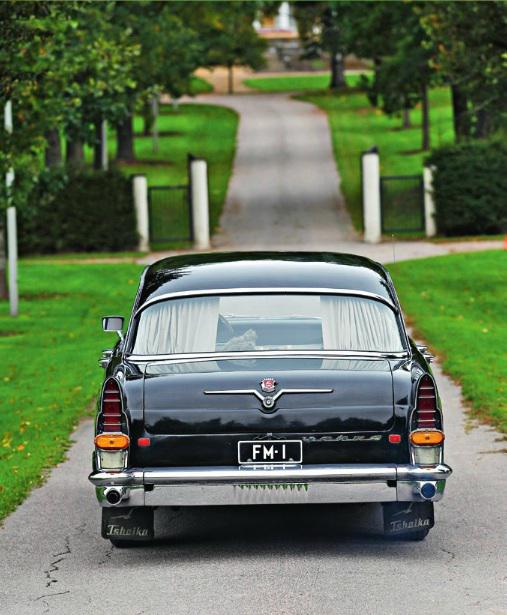
Options for fastidious
Not counting the cars produced in the first small batches Gulls were black, there is a standard practice for executive cars. The spacious and comfortable cabin easily fit seven passengers, two of whom are sitting on "a number of intermediate" small folding seats. The heating system delivers heat evenly throughout the cabin. For the first time in the Soviet car was a 5-channel radio with automatic tuning of channels and electrically raise and lower the antenna. Also windows in the doors have electric.
Seagulls enjoyed high-ranking officials, ministers, heads of departments (departments in a modern - pp), secretaries of the Central Committee of the Communist Party and Preview Party secretaries of regional committees, as well as persons representing the Soviet Union abroad. Several cars serviced Moscow diplomatic corps. They transported the East German, Bulgarian, Mongolian, North Korean, Indonesian, Ethiopian and Finnish ambassadors. One seagull was even in the use of the US Embassy. At Intourist garage also had a few gulls ready for carting important guests. Some served their ministries in Chaek transferred for use in the Wedding Palace. On these, the past is often more than one a thorough bulkhead cars, an ordinary citizen could experience a trip in the ministerial. The added value that recycling gave celluloid tape and giant rings. In the mid-1970s Seagulls rental cost 50 rubles. which was twice as expensive rental Volga. The central part of the console runs in 5-channel radio with automatic tuning - the first time in the Soviet car.
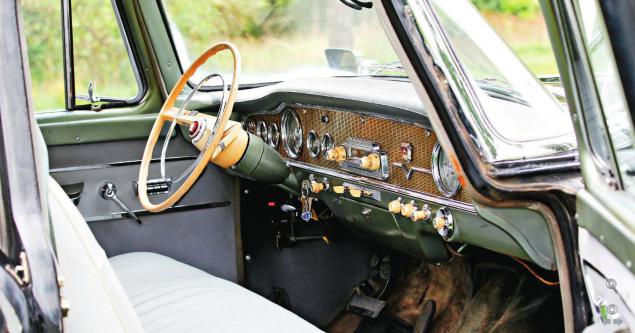
Transfer selected buttons
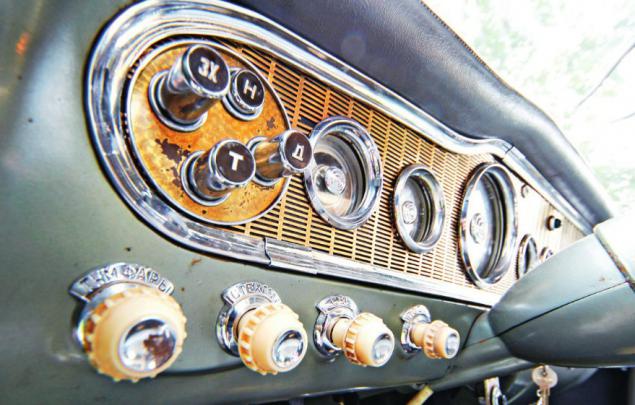
Spetsmodeli
Manufacturing GAZ-13 Chaika lasted more than 20 years, 1959-1981. Since 1977, it produced in parallel with the next model, the GAZ-14. Production of the latter was initially modest, and all-star all the time it was built only 1120 cars of this model. GAZ-13 Chaika was produced at a rate of about 150 cars a year, and for the time of production of 3179 units were built. That is not much of a rarity, but nonetheless, the term "mass production" is not particularly suitable. On the other hand, it is not only going to Seagull manually.
With Executive car to associate high resolution. With a length of 5 to 6 meters, Seagull fully satisfies this requirement. Mezhosnoe distance of 3, 25 meters, the mass of 2100 kilograms, and provides all this in motion 195 th horsepower V8 engine with a volume of 5526 cubic centimeters. Along with the machines equipped sedan, produced small batches of GAZ-13A Seagull cab driver who was separated from the rest of the cabin by a glass partition. For this modification did not develop a complex mechanism window instead satisfied with a conventional sliding glass type that can be seen on the bookshelf.
The opening of the passenger rows of roof was in vogue at the dawn of motoring. And such a GAZ-13 Chaika Lando, where the driver sits under a solid roof, and passengers can open sky overhead there. It is said that at first she was released as the car shooting, but some of the ailing party members drew attention to it, and the car was transferred to one under Moscow "sanatorium" for quiet recreational use.
Since the second half of the 1970s, a small number of gulls converted at Riga Bus Plant in Latvia RAF ambulances GAZ-13C. For this order stood Ministry of Health and machines intended for hospitals, used by the elderly, the Bolsheviks and high-ranking officials and their families. Machines with a station wagon equipped with rear door, called the Kremlin. They had a number of medical devices, conventional stretchers, two seats for attendants, but otherwise no special equipment.
Sometimes the studio on its own converted vehicle for filming on the move. Such machines removed the rear part of the roof and seat installed in their place a flat area for the cameras. Also, could establish additional flat surfaces for cameras in the front and rear of the vehicle. To create a crew specially selected car Executive car like Seagull, because it is different smoothness.
Open modification Chaika GAZ-13B "Factor" has always been a rarity. The exact number of copies built is unknown, but according to various estimates, these factors (ie convertibles from birth - pp) was not more than 20 pieces. In these machines, fabric roof is raised and lowered specially developed for this hydraulic system, controlled from the driver's seat. The only attempt to modernize the look of the GAZ-13 Chaika launched in 1961. The car has received the double headlights, a new grille and bumper. At this time, he served as a model of the Chrysler Windsor sample 1959 (1959 Chrysler Windsor). Work on upgrading stopped at the prototype stage, which is presented to the XXII Congress of the CPSU. Model GAZ-13 Chaika retained its original appearance until 1981, ie, until the end of their life cycle.
There were cases when the first owner of Seagulls was a private person, you can be counted on the fingers of one hand. Nikita Khrushchev gave Seagull Cuban President Fidel Castro, writer Mikhail Sholokhov, the first woman cosmonaut Valentina Tereshkova and ballerina Galina Ulanova.
Source:
Therefore, finding and reading in the category "Classical" one prescription me magazines, articles about the cult Soviet GAZ-13 Chaika, decided by all means to share with the readers of Yap, in the hope that the view from the outside and a little history of an era of the domestic automotive industry It will seem interesting to many of the regulars avtorubriki "YaPlakal»
Translation of "sight", my original text in Finnish and photos of the magazine "Motor»
Please do not wedged in the text, but to wait for the end, which was reported separately
According to the materials of the periodical of the Union of motorists in Finland "Motor" no. 6/2012

Rublev SMILE
Soviet executive car Chaika, or officially GAZ-13 - one of the cars in which people went through their representatives. Times, customs, and even the state has since changed, but in everyday road traffic Seagull has never been seen. In addition to the very, registered in the county of Oulu taxi (a city in northern Finland, approx. Interpreter), which is rumored to be set Treyderovky diesel ...
Of course, from the Union of Soviet Socialist Republics was supposed to be a representation car. Ministers, senior officials and important functionaries of the Communist Party of the great and powerful country was worthless to move on stellar crew (an allusion to the Mercedes - approx. Interpreter here and below), not to mention the "dollar smile" (ie, American cars - n. P.). The same applies to representatives of the USSR abroad.
Was the Soviets, of course, the 7-seater limousine ZIS-110. Its origin goes the rumor that the car is based on a gift from Franklin Roosevelt in 1942, Joseph Stalin Packard Super Eyte (Packard Super Eight). With the difference that ZISovskie millimeter bolts, not inch, like Packard. Six-liter row eight, like the rest of ZIS technique, originally from the 1930s, including the front of the machine. Total in 1959 released the 2089 cars of this brand. And he was not an exact copy of Packard.
Later ZIM is also the end of the 1950s began to look dated, even though he was the world's first passenger limousine with three rows and a monocoque body. He had plenty of chronic shortcomings: heavy control, brake infirm, weak front suspension, poor stove, poor body resistance to corrosion and high noise levels behind the cab - ie very inappropriately exactly where the passengers were important. Zimove released from 1950 to 1959. more than 21,000 units in Finland, they became familiar mainly as taxis.
From the appearance of the old ZIM it was time to get rid of, and requirements for power, ride quality and comfort were formed. An order was placed, or rather, an order for the production of new large executive car.
A new direction began to look, and soon found. GAZ finished the first prototype machine representative at ministerial level in 1957, and cars designed to directly test run were ready in 1958. For decades avtokonstruirovaniya the schedule was very fast.
For small-scale production began January 16, 1959. Even before the prototype Gulls and Volga M-21 were shown at the world exhibition EXPO 58 in Brussels. There Chaika won the Grand Prix for the achievements of designers and designers. Start of production is also approximately coincide with the XXI Congress of the CPSU. GAZ gave Congress a copy of The Seagull as a "worker gift»
Seagull with all the innovation was a significant step forward for the automotive industry of the Soviet Union. During 1959 she exhibited at many international exhibitions in Brno, Budapest, Leipzig, Geneva and even New York. At home it was exhibited in the pavilion of engineering at ENEA. Birth Seagulls
In constructing its representation of machines, the Soviet Union followed the American concept of the automotive industry. This, no doubt influenced and end-user requirements. In the 1950s, the leaders of the USSR fascinated large motors V8, automatic transmission, large windows and expressive shape of the body. In 1955, the Soviet Union bought as samples 2 Packard - Patricia and Karibea. Specialists us, GAZ and ZIL plant, dismantled car parts and studied them intently. In 1956, work on the creation of a new executive car started "from scratch».
GAZ has received an order to create a vehicle "ministerial" level. While the plant was named People's Commissar of Foreign Minister Molotov, and called ZIM. After the defeat of the Stalinists, Molotov fell into disgrace and the plant returned to its original name, GAZ. Thus and Seagull received a GAZ-13 index.
The number 13 was considered unlucky, but the real Communists ought not to be superstitious. Along with the model number, the car was named Seagull at the Slavic tradition to look all over the comparative. The car carrying important passengers, was supposed to be a class higher than its predecessor. A seagull hovering over the expanse of the Volga - easy! .. Responsible for organizing the export of cars, Autoexport, suggested in his booklet a little more romantic interpretation. Gorky, who live on the banks of the mighty Volga River, admire seagulls glide over the surface of the river. So the name of the Seagull was born as if by itself.
Automotive history of our eastern neighbor is very well documented and objectively. It says deceived automotive history Timo Laitinen, who collected the whole thematic library, many books in which Russia and the USSR. Timo kindly found out who was responsible for the development of Seagulls, referring to two books: SV Kanunnikov "Domestic Cars" (2009) and Leo Shugurov "Cars Russia and the Soviet Union, part of the 2nd" (1994). According to them, the driving force of the group of designers were B.S.Solovёv, NA Jushmanov, NG Mozohin. As a "designer" is mentioned L.M.Eremeev.
The American cars have for many years been used multi-cylinder V-type engines. The Soviet representative high-end limousine could not keep up in this competition. As a basis for the development was taken as an 8-cylinder engine Chrysler. Its components such as cylinder groups, and gas exchange system, a unified engine Volga M-21. First released in Gorky, mounted on the prototypes of Seagulls, motors V8, had a working volume of 4, 89 liters and power of 180 horsepower.
When tested immediately it found out that you need more power. Volume increased to 5, 5 liters, and output could increase to 195 hp Motor Cast Alloy, his wet cylinder liners and the centrifugal oil filter. The design recognized so successful that the engine with minor modifications was later used in lorries GAZ-53A, GAZ-66 and even in armored vehicles.
In continuation of a hydraulic motor torque converter and automatic 3-speed transmission. Selection of gear unit on the dashboard using the buttons in the best American style. Seagull course, RWD.
Gulls have an X-shaped frame without side spars to which 16 points is attached the body through rubber cushions. Front-wheel independent suspension on triangular lever and the cylindrical coil springs, rigid rear axle on the longitudinal semi springs. Separately, we emphasize that the gull standing on tubeless tires, which was not common in the 1950s and western cars.
The first prototype of a seagull finished by July 1957. The lower part of the bi-color body was painted a bright cherry red, and the top - in light beige. Many trim parts were adopted with Packard virtually unchanged, such as the rear lights and a large V mark on the grid. However, for the Soviet people it symbolized tea, but in general, in America, often regardless of the brand of the car so marked V + shaped motor.
The first model is different from the production model. Arch niches of the rear wheels and windshield border were different. Ahead there was no fog lights. Several prototypes for sea trials, made in 1958, in practice, already comply with the serial model. Then on the Soviet car factories it had no separate testing of automobile polygons, so the tests were carried out on normal roads in the Central zone and the Caucasus Mountains.

Taillights cathedral style directly borrowed from Packard Kabibean. The rest of the copy also reached considerable size, so to speak evil of the Soviet limousine called "cousin Packard»

Options for fastidious
Not counting the cars produced in the first small batches Gulls were black, there is a standard practice for executive cars. The spacious and comfortable cabin easily fit seven passengers, two of whom are sitting on "a number of intermediate" small folding seats. The heating system delivers heat evenly throughout the cabin. For the first time in the Soviet car was a 5-channel radio with automatic tuning of channels and electrically raise and lower the antenna. Also windows in the doors have electric.
Seagulls enjoyed high-ranking officials, ministers, heads of departments (departments in a modern - pp), secretaries of the Central Committee of the Communist Party and Preview Party secretaries of regional committees, as well as persons representing the Soviet Union abroad. Several cars serviced Moscow diplomatic corps. They transported the East German, Bulgarian, Mongolian, North Korean, Indonesian, Ethiopian and Finnish ambassadors. One seagull was even in the use of the US Embassy. At Intourist garage also had a few gulls ready for carting important guests. Some served their ministries in Chaek transferred for use in the Wedding Palace. On these, the past is often more than one a thorough bulkhead cars, an ordinary citizen could experience a trip in the ministerial. The added value that recycling gave celluloid tape and giant rings. In the mid-1970s Seagulls rental cost 50 rubles. which was twice as expensive rental Volga. The central part of the console runs in 5-channel radio with automatic tuning - the first time in the Soviet car.

Transfer selected buttons

Spetsmodeli
Manufacturing GAZ-13 Chaika lasted more than 20 years, 1959-1981. Since 1977, it produced in parallel with the next model, the GAZ-14. Production of the latter was initially modest, and all-star all the time it was built only 1120 cars of this model. GAZ-13 Chaika was produced at a rate of about 150 cars a year, and for the time of production of 3179 units were built. That is not much of a rarity, but nonetheless, the term "mass production" is not particularly suitable. On the other hand, it is not only going to Seagull manually.
With Executive car to associate high resolution. With a length of 5 to 6 meters, Seagull fully satisfies this requirement. Mezhosnoe distance of 3, 25 meters, the mass of 2100 kilograms, and provides all this in motion 195 th horsepower V8 engine with a volume of 5526 cubic centimeters. Along with the machines equipped sedan, produced small batches of GAZ-13A Seagull cab driver who was separated from the rest of the cabin by a glass partition. For this modification did not develop a complex mechanism window instead satisfied with a conventional sliding glass type that can be seen on the bookshelf.
The opening of the passenger rows of roof was in vogue at the dawn of motoring. And such a GAZ-13 Chaika Lando, where the driver sits under a solid roof, and passengers can open sky overhead there. It is said that at first she was released as the car shooting, but some of the ailing party members drew attention to it, and the car was transferred to one under Moscow "sanatorium" for quiet recreational use.
Since the second half of the 1970s, a small number of gulls converted at Riga Bus Plant in Latvia RAF ambulances GAZ-13C. For this order stood Ministry of Health and machines intended for hospitals, used by the elderly, the Bolsheviks and high-ranking officials and their families. Machines with a station wagon equipped with rear door, called the Kremlin. They had a number of medical devices, conventional stretchers, two seats for attendants, but otherwise no special equipment.
Sometimes the studio on its own converted vehicle for filming on the move. Such machines removed the rear part of the roof and seat installed in their place a flat area for the cameras. Also, could establish additional flat surfaces for cameras in the front and rear of the vehicle. To create a crew specially selected car Executive car like Seagull, because it is different smoothness.
Open modification Chaika GAZ-13B "Factor" has always been a rarity. The exact number of copies built is unknown, but according to various estimates, these factors (ie convertibles from birth - pp) was not more than 20 pieces. In these machines, fabric roof is raised and lowered specially developed for this hydraulic system, controlled from the driver's seat. The only attempt to modernize the look of the GAZ-13 Chaika launched in 1961. The car has received the double headlights, a new grille and bumper. At this time, he served as a model of the Chrysler Windsor sample 1959 (1959 Chrysler Windsor). Work on upgrading stopped at the prototype stage, which is presented to the XXII Congress of the CPSU. Model GAZ-13 Chaika retained its original appearance until 1981, ie, until the end of their life cycle.
There were cases when the first owner of Seagulls was a private person, you can be counted on the fingers of one hand. Nikita Khrushchev gave Seagull Cuban President Fidel Castro, writer Mikhail Sholokhov, the first woman cosmonaut Valentina Tereshkova and ballerina Galina Ulanova.
Source:



















